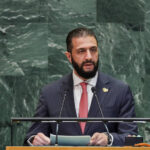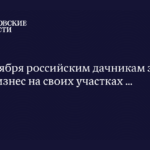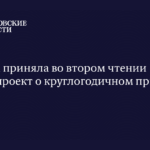Traffic will be temporarily restricted on Moscow’s embankments and streets today due to the Moscow Marathon.
Until 12:00 PM, traffic will be closed on sections of Luzhniki Street (from building 24, structure 24 to Luzhnetskaya Embankment) and Luzhnetskaya Embankment (from Luzhniki Street to Frunzenskaya Embankment). From 8:50 AM to 1:00 PM, travel will be prohibited on Smolensky Boulevard and the outer side of Zubovsky Boulevard. From 9:00 AM to 1:00 PM, traffic will be restricted on Krymsky Proezd and Smolenskaya-Sennaya Square.
From 9:00 AM to 2:00 PM, passage will be prohibited on Frunzenskaya, Rostovskaya, Savvinskaya, Novodevichya embankments, as well as sections of Smolenskaya and Luzhnetskaya. From 9:00 AM to 2:00 PM, restrictions will also apply to sections of Smolenskaya Street, Khamovnichesky Val, and Luzhniki.
Parking will also be prohibited on these streets. Drivers are asked to consider these changes when planning their routes.
Luzhniki Street
Luzhniki Street is a major thoroughfare in Moscow, Russia, named after the nearby Luzhniki Olympic Complex. The area’s history is primarily tied to the 1980 Summer Olympics, for which the sports complex was the central venue. Today, the street serves as a key access route to the stadium, which has since hosted events like the 2018 FIFA World Cup Final.
Luzhnetskaya Embankment
Luzhnetskaya Embankment is a major roadway and scenic walkway running along the Moskva River in Moscow. It is most famous for the Luzhniki Olympic Complex located nearby, which was the central venue for the 1980 Summer Olympics. The area has since become a popular recreational and sports hub for the city.
Smolensky Boulevard
Smolensky Boulevard is one of the ten boulevards that form Moscow’s famous Boulevard Ring, a chain of green spaces established in the 1820s on the site of the former city walls. It is named after the old Smolensk Road, which historically led to the city of Smolensk. Today, it is a popular public promenade known for its statues, including a monument to the composer Mikhail Glinka.
Zubovsky Boulevard
Zubovsky Boulevard is a historic thoroughfare in Moscow, Russia, forming part of the city’s famous Boulevard Ring. It was established in the 1820s on the site of the former White City wall, which was dismantled after the Fire of 1812. The boulevard is named after the 18th-century Zubov family, who owned property in the area.
Krymsky Proezd
Krymsky Proezd is a major thoroughfare in central Moscow, running from the Crimean Bridge across the Moskva River to Zubovskaya Square. The area’s name, meaning “Crimean Passage,” originates from the historic Crimean ford and later the Crimean Bridge, which served as a key route for trade and travel to the south. Today, it is a vibrant area known for its proximity to Gorky Park and the modern Tretyakov Gallery.
Smolenskaya-Sennaya Square
Smolenskaya-Sennaya Square is a historic square located on the left bank of Moscow. It was historically a major hay market (a “senny” market) from the 17th to the 19th century, which is the origin of its name. Today, the square is a busy transport hub and commercial area, having lost its original market function.
Frunzenskaya Embankment
Frunzenskaya Embankment is a major roadway and scenic walkway running along the Moskva River in Moscow. It was constructed and developed primarily in the 1950s as part of the city’s post-war urban expansion, named after the Soviet military leader Mikhail Frunze. The embankment is now lined with notable examples of Stalinist architecture and provides picturesque views of the river and Gorky Park.
Novodevichya Embankment
Novodevichya Embankment is a historic street running along a bend of the Moskva River in Moscow. It is most famous for offering a direct and picturesque view of the Novodevichy Convent, a UNESCO World Heritage Site founded in the 16th century. The embankment itself was developed in the mid-20th century and is now a popular scenic spot.





